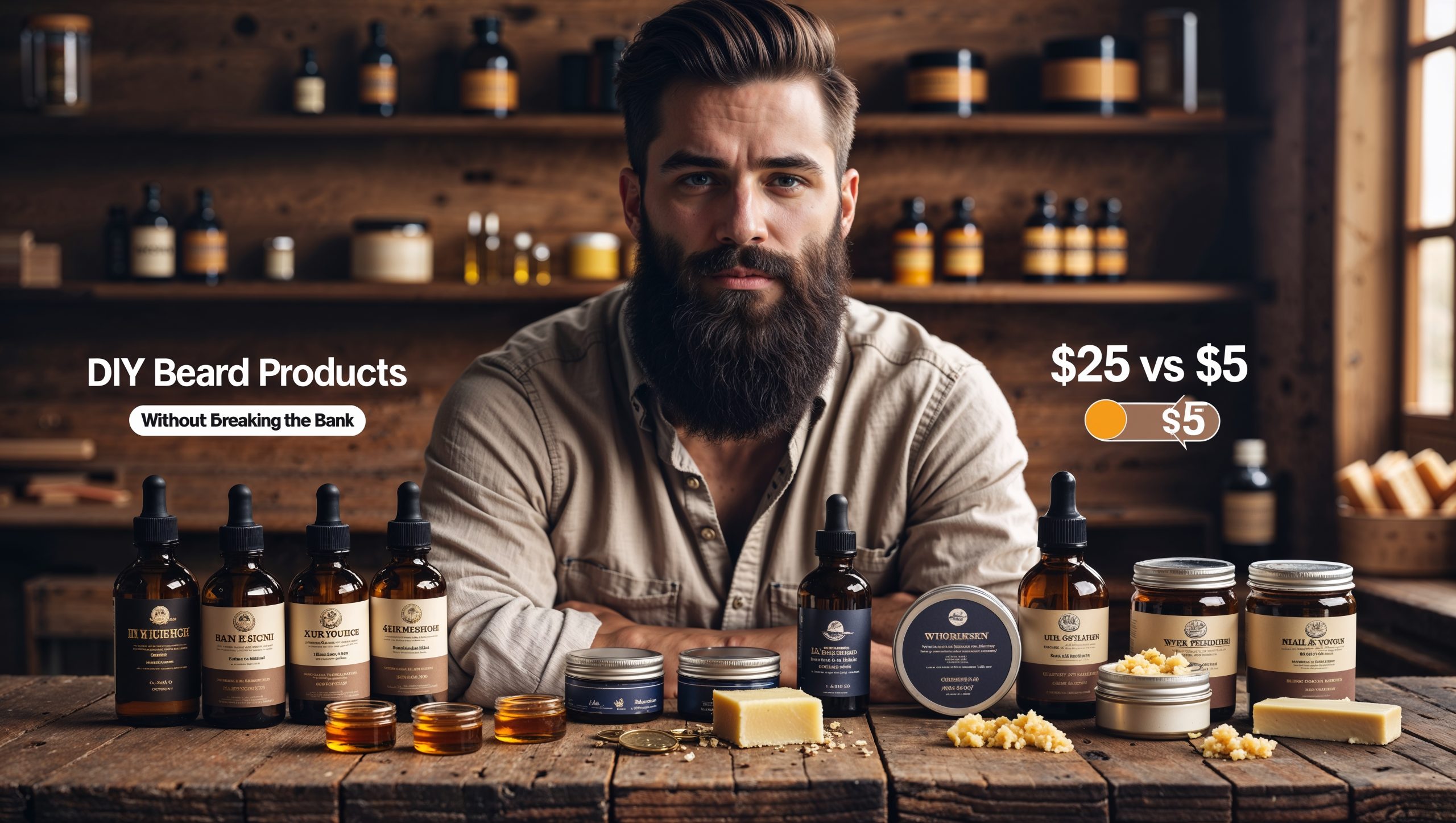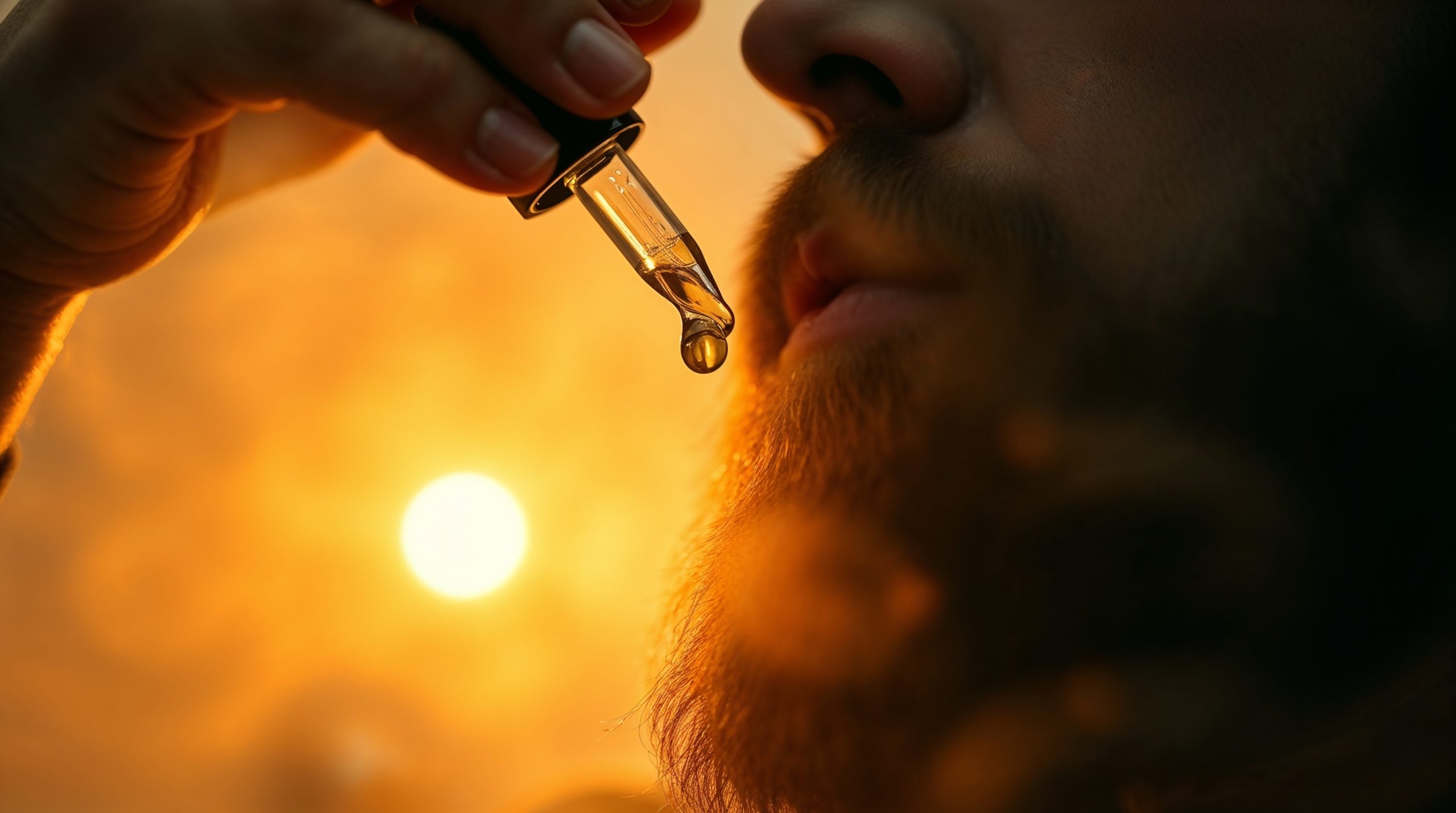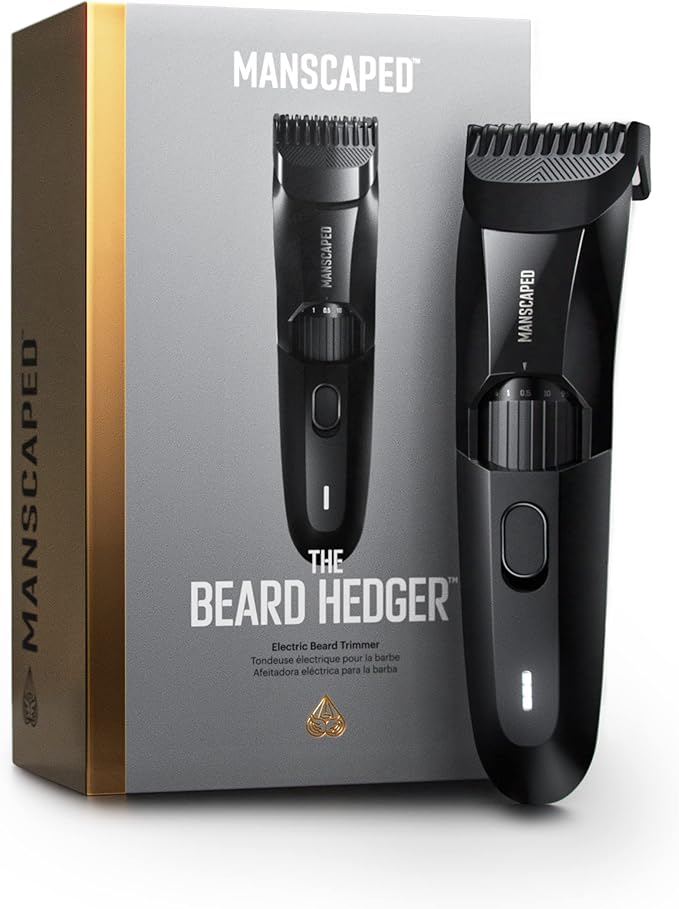- The Exact Time It Takes to Grow a Beard: A Timeline Breakdown
- The Science Behind Your Face Forest (Just Enough to Sound Smart)
- Factors That Will Make or Break Your Beard Dreams
- Pre-Growth Prep: Setting Up Your Face For Success
- Week 1-2: The Stubble Struggle
- Weeks 3-4: The Awkward Phase Begins
- The 1-Month Milestone: Taking Stock of Your Face Situation
- Months 2-3: Now We’re Talking Beard Business
- The 3-Month Milestone: Your First Real Beard
- Months 4-6: Refinement and Your Signature Style
- The 6-Month Milestone: The Established Beard
- Beyond 6 Months: The Long Game
- Beard Growth Myths: Let’s Bust ‘Em!
- The Complete Beard Care Arsenal
- Troubleshooting Common Beard Growth Issues
- Conclusion: The Beard Awaits
- FAQ: Time It Takes to Grow a Beard
So, you’ve decided to join the ranks of the bearded brotherhood. Welcome to the club, my soon-to-be fuzzy-faced friend! Whether you’re tired of your baby-smooth cheeks or just want to channel your inner lumberjack, growing a beard is a journey – one with more twists and turns than your first attempt at using a beard trimmer without a guard (ouch).

Let’s face it (pun absolutely intended): growing a beard isn’t just about throwing away your razor and waiting for magic to happen. It’s a test of patience, perseverance, and occasionally, your significant other’s tolerance for facial prickliness. But fear not! I’m here to guide you through every itchy, patchy, and glorious stage of your beard-growing adventure.
Disclosure: This post contains affiliate links, which means if you click through and make a purchase, The Bearded Rogue may receive a small commission at no extra cost to you
The Exact Time It Takes to Grow a Beard: A Timeline Breakdown
If you’re wondering exactly how much time it takes to grow a beard worth stroking thoughtfully, you’ve come to the right place. This comprehensive guide breaks down the journey week by week, month by month
The Science Behind Your Face Forest (Just Enough to Sound Smart)
Before we dive into the week-by-week beard diary, let’s quickly cover the basics. Your facial hair grows about 0.3-0.5mm per day (around half an inch per month), which might have you calculating, “So I’ll have a Viking beard by Christmas?” Hold your horses, Thor. Not all facial hair is created equal, and that growth rate varies wildly from one magnificent mug to another.

STOP SEEKING, THE BEST IS RIGHT HERE – Why still looking around. These unscented beard oil and beard balm both have organic ingredients to keep your facial hair and skin hydrated, moisturized, silky soft, healthy and groomed during a long day.
Understanding the science behind how much time it takes to grow a beard can help set realistic expectations for your facial journey
Your beard hairs cycle through three phases:
- Anagen phase: Active growth (this is the good stuff)
- Catagen phase: Transition period (the awkward teenager of hair phases)
- Telogen phase: Resting phase (when hair follicles take a coffee break)
The real MVP behind beard growth is our friend testosterone, which gets converted to DHT (dihydrotestosterone) – the hormone that makes your beard happen. More DHT sensitivity in your face = more robust beard potential. Thanks, hormones!
Factors That Will Make or Break Your Beard Dreams
Before you start measuring your face for a ZZ Top tribute, let’s talk about what actually determines your beard destiny. Several key elements influence the time it takes to grow a beard, from your DNA blueprint to your daily habits.
Genetics: Blame (or Thank) Your Ancestors
If your family tree is filled with magnificent beards, congrats! You’ve hit the genetic lottery. If not, don’t lose hope – sometimes beards skip generations, or you might be the glorious mutation your lineage has been waiting for.
Age: Patience, Young Padawan
- Teens to early 20s: Typically patchy, often disappointing
- Mid-20s to 30s: The golden age of beard growth
- 30s and beyond: Fuller, sometimes with distinguished gray highlights (or as I call them, wisdom stripes)
Most guys don’t reach their full beard potential until their late 20s or early 30s. So if you’re a younger dude with patchy results, time is on your side!

Ethnicity: Different Roots, Different Routes
Your ethnic background plays a huge role in your beard journey:
- Mediterranean/Middle Eastern ancestry: Congrats on winning the beard genetic lottery! You’ll likely experience earlier, denser growth. Some guys with these roots can sprout a 5 o’clock shadow by noon.
- East Asian/Native American ancestry: You might have less dense growth and a different pattern. Your beard may take longer to fill in but can still look absolutely amazing with proper care and styling.
- African ancestry: Often results in very curly, dense beards that may grow slower in appearance (because curls compact length). The tight curl pattern can lead to more ingrown hairs, so proper exfoliation and moisturizing are especially important.
- Northern European ancestry: Typically results in straighter beards that might appear longer faster, though density can vary widely. Often lighter in color, which can make patchiness more noticeable during early stages.
- South Asian ancestry: Generally blessed with good beard coverage, though growth patterns can be unique. May have defined cheek lines naturally.
Remember: these are broad generalizations. Your individual results may vary, and that’s perfectly normal!
Health & Lifestyle: You Are What You Eat (And Do)
- Diet: Your beard is literally made from what you eat. Protein, vitamins B, D, and E, and minerals like zinc are your facial hair’s best friends.
- Exercise: Regular workouts boost testosterone, which means better beard potential. Another excuse to hit the gym!
- Sleep: Your body does its best repair work while you snooze, including nourishing those facial follicles.
- Stress: The beard-killer. High stress means high cortisol, which can slow growth and even cause shedding. Chill out for your chin’s sake!
What Affects Your Beard Growth Speed?
The key factors that determine how fast and thick your facial forest will grow
1Genetics
Your DNA is the master blueprint that determines your beard’s potential density, pattern, and growth rate. Thanks, ancestors!
2Hormones
Testosterone and DHT (dihydrotestosterone) are the dynamic duo responsible for stimulating facial hair follicles.
3Age
Most men see their beard potential increase throughout their 20s and 30s, with peak beard years often between 25-35.
4Nutrition
Your beard needs proper fuel! Proteins, vitamins (especially B, D, and E), and minerals like zinc are essential building blocks.
5Skin Health
Healthy skin creates the perfect environment for robust beard growth. Good circulation and follicle care matter!
6Lifestyle
Sleep quality, exercise, and stress levels all affect hormone production and overall health, impacting beard growth.
7Ethnicity
Different ethnic backgrounds have varying beard growth patterns, densities, and timelines – all perfectly normal variations.
8Beard Care
While products won’t change genetics, proper care ensures your beard grows at its maximum potential without breakage or damage.
How Isner Mile Beard Kit Supports Your Growth Journey
The complete kit addresses multiple factors with specialized products: Beard Wash maintains skin health, Beard Oil nourishes follicles, Beard Balm protects growing hairs, while the Comb and Brush prevent breakage and stimulate circulation.
Pre-Growth Prep: Setting Up Your Face For Success
Before you embark on your bristly adventure, here’s your pre-beard checklist:
- Start with clean slate: Begin your journey with a fresh shave. Think of it as preparing the soil before planting seeds.
- Get your toolkit ready: The Isner Mile Beard Kit will be your best friend on this journey. Trust me, you’ll want that beard wash when the itching starts.
- Take “before” photos: You’ll thank me later when you need motivation during the awkward stages.
- Set realistic expectations: Not everyone can grow a Jason Momoa mane, and that’s okay! Work with what your genetics gave you.
- Choose your start time wisely: Beginning during a vacation or holiday break gives you time to get through the initial awkward phase without public scrutiny.
Beard Growth Timeline: The Journey to Facial Greatness
What to expect when you’re expecting a beard – from stubble to spectacular
Week 1-2: The Stubble Phase
The beginning of your beard journey. Expect some itchiness as your facial hair breaks through the surface.
Week 3-4: The Awkward Early Growth
The notorious “patchy phase” where growth is uneven. This is when most men quit – don’t be that guy!
Month 1: Taking Stock
Your beard is taking shape! You’ll start to see your natural growth pattern and thickness potential.
Month 2-3: Real Growth Begins
The “magic months” where your beard really starts to fill in and connect. Patience pays off!
Month 3: Your First Real Beard
Congratulations! You now have what most would consider a “full beard” with good coverage.
Month 4-6: Refinement and Style
Time to develop your signature style as your beard reaches impressive length and fullness.
Month 6+: The Established Beard
Welcome to the brotherhood of the fully-bearded! Your facial forest is now established and majestic.
💡 Pro Tip
Starting your beard journey in fall or winter gives you natural camouflage – everyone’s growing facial hair when it’s cold, so your awkward phase will blend right in with the seasonal beard trend!
Week 1-2: The Stubble Struggle

What’s happening: Your face is now sporting a 5 o’clock shadow that refuses to leave, no matter what time it is. You’ve reached the “ruggedly handsome” phase that leading men in action movies seem to maintain effortlessly (spoiler alert: they have professional stubble groomers).
What you’ll experience:
- The first signs of your growth pattern (and possibly the first signs of panic)
- Initial itchiness as sharp-tipped hairs push through the skin
- Questions from colleagues about whether you forgot your razor
Beard care at this stage:
- Wash your face regularly with gentle cleanser or beard wash
- Moisturize to combat dryness
- Resist the urge to scratch (your face will thank you)
- Start applying a small amount of beard oil to soothe the skin underneath
Length expectation: 1-2mm (about the length of that annoying paper cut you just got opening the Isner Mile package)
Weeks 3-4: The Awkward Phase Begins
Welcome to what I like to call the “Don’t Judge Me Yet” phase. This is when most beard attempts die a premature death. Your facial hair is now long enough to look intentional but not quite long enough to look good.
What’s happening: Different areas grow at different rates, creating the infamous patchy look. Your cheeks might be sparse while your mustache and chin are coming in strong (or vice versa).
What you’ll experience:
- Peak itchiness (hang in there!)
- Patchy growth that resembles a poorly maintained lawn
- The first serious temptation to reach for the razor
- Friends and family helpfully pointing out that “you missed a spot”
Beard care at this stage:
- Step up your beard oil game – daily application is now essential
- Use a soft beard brush to exfoliate the skin underneath
- Keep washing regularly to prevent buildup and flaking
- Still NO TRIMMING, even though you’ll be tempted
Length expectation: 3-5mm (about the height of the small mountain of beard hair that will eventually accumulate in your sink)
Did You Know?
The itching during early beard growth isn’t from the hair itself but from the suddenly increased sebum production and skin dryness. Proper moisturizing with beard oil cuts itching by up to 75% for most guys!
The 1-Month Milestone: Taking Stock of Your Face Situation
Congratulations! You’ve survived the first month, which is further than many men get. Take a moment to appreciate your dedication to facial greatness.
What’s happening: Your beard is now officially a beard, albeit a young one. The patchiness is still there, but the overall shape is taking form.
What you’ll experience:
- Decreased itchiness (finally!)
- More defined growth pattern
- The ability to actually stroke your beard thoughtfully (a privilege not to be taken lightly)
- First encounters with beard dandruff if you’re not careful
Beard care at this stage:
- Full Isner Mile routine: Wash, oil, and introduce beard balm
- First very gentle trimming of fly-away hairs if necessary
- Start training your beard with a comb – direction matters now
- Focus extra care on any slower-growing areas
Length expectation: 6-10mm (just long enough to trap crumbs from your lunch)
Months 2-3: Now We’re Talking Beard Business
This is where the beard boys get separated from the beard men. By month two, you’re sporting legitimate facial hair that’s impossible to ignore.
What’s happening: Your beard is filling in, connecting, and generally looking more intentional than accidental. Different areas are synchronizing growth, and your patience is starting to pay off.
What you’ll experience:
- The need for actual styling and shaping
- Comments changing from “Are you growing a beard?” to “Nice beard!”
- The joy of stroking your beard while contemplating life’s great mysteries
- The reality of food getting trapped in your facial net
Beard care at this stage:
- Regular trimming to maintain shape (but resist major cuts!)
- Daily combing and brushing to train growth patterns
- Beard balm for styling and control
- Deeper cleaning with dedicated beard wash
Length expectation: 10-25mm (long enough to make eating soup an extreme sport)
⚠️ Important Note
Month three is when many guys get impatient and trim too much, too soon. Remember: it’s easier to take more off later than to put it back on! When in doubt, trim less than you think you should.
The 3-Month Milestone: Your First Real Beard
At this point in your beard timeline, you’ve invested about 90 days—the minimum time it takes to grow a beard most people would consider “full”
What’s happening: Your beard has reached a state of maturity where it’s full enough to style in various ways. The awkward phase is officially in your rearview mirror.
What you’ll experience:
- A dramatic slowdown in perceived growth (it’s still growing, just not as noticeably)
- The need for more serious grooming decisions
- Strangers with beards nodding respectfully at you (welcome to the club)
- The ability to stroke your beard meaningfully during conversations
Beard care at this stage:
- Regular trimming for shape maintenance
- Consideration of professional beard shaping (if desired)
- Daily use of the complete Isner Mile arsenal
- Strategic styling for your face shape
Length expectation: 25-40mm (substantial enough to provide winter insulation)

Derma Roller, Growth Oil, Vitamins and Vitamin Spray, Shampoo and Boar Bristle Brush – Gift Set – Cedar
Months 4-6: Refinement and Your Signature Style
At this stage, your beard has personality. It’s not just facial hair anymore; it’s part of your identity.
What’s happening: Your beard has reached its adult phase and is ready to be molded into your signature look. Growth has stabilized, and you’re now maintaining more than growing.
What you’ll experience:
- The need for specialized beard accessories
- Regular trimming sessions to maintain your chosen shape
- Questions from beard novices seeking your now-expert advice
- The satisfaction of having persevered through all the challenging phases
Beard care at this stage:
- More focused styling techniques
- Potential introduction of beard scissors for detail work
- Possible experimentation with different balms and oils
- Environmental adjustments (humidity, temperature changes)
Length expectation: 40-60mm (the goldilocks zone for most beard styles)
The 6-Month Milestone: The Established Beard
Half a year in, and your face sweater is now a permanent fixture. You probably can’t even remember what your chin looks like anymore.
What’s happening: Your beard has reached its mature state, with a full, established growth pattern. Terminal hairs have developed, and you’re now in maintenance mode.
What you’ll experience:
- Regular maintenance rather than growth monitoring
- The need for more specialized care for length
- Occasional desire to change styles completely
- People who haven’t seen you in months doing double-takes
Beard care at this stage:
- Dedicated deep-conditioning treatments
- Careful trimming to maintain shape without losing length
- Advanced styling techniques
- Seasonal adjustments to your care routine
Length expectation: 60mm+ (long enough to require its own zipcode)
Beyond 6 Months: The Long Game
For those aiming for wizard status, the journey continues! Beyond six months, you’re in long beard territory.
What to expect:
- Growth starts to slow as hairs reach their terminal length
- More attention needed for detangling and conditioning
- Potential need for specialized long-beard products
- The ability to store small objects in your facial hair (keys, coins, the hopes and dreams of beard-less men)
Length expectation: Depends on your genetics, but typically 1-1.5 inches per quarter (67-100mm every three months)
Beard Growth Myths: Let’s Bust ‘Em!
Before I send you off on your beard adventure, let’s clear up some persistent beard falsehoods:
MYTH: Shaving makes your beard grow back thicker
TRUTH: Nope! Shaving just creates a blunt tip on the hair shaft, making it feel coarser when it grows back. It doesn’t actually change the follicle or growth rate. Science!
MYTH: Beards grow faster in the summer
TRUTH: There’s a tiny bit of truth here – hair growth can increase slightly in warmer months, but the difference is minimal. Your beard won’t suddenly sprout at twice the speed just because you’re sweating more.
MYTH: If you can’t grow a beard by 20, you never will
TRUTH: False! Many men don’t reach their full beard potential until their late 20s or even 30s. Patience is more than a virtue; it’s a beard necessity.
MYTH: Beard oil makes your beard grow faster
TRUTH: Beard oil nourishes the skin and hair, creating optimal conditions for growth, but it can’t change your genetics or hormones. Think of it as fertilizer – it helps what’s there grow healthier, but it can’t plant new seeds.
MYTH: All parts of your beard grow at the same rate
TRUTH: Not even close! Different areas grow at different speeds and densities. For most men, the mustache and chin come in first and fullest, while cheeks are often slower and patchier.
The Complete Beard Care Arsenal
Now that you understand the timeline, let’s talk tools of the trade. To grow a magnificent mane, you’ll need:
The Essentials (AKA What’s in that Isner Mile Kit)
- Beard Wash/Shampoo: Regular hair shampoo strips natural oils from your beard. Dedicated beard wash, like the Isner Mile formula, cleans without drying.
- Beard Oil: The holy grail of beard care. Moisturizes skin, reduces itch, and keeps beard hair soft and manageable. The Isner Mile sandalwood scent is subtle enough for daily wear.
- Beard Balm: For styling, control, and additional conditioning. Essential once you hit the 1-month mark.
- Beard Comb: A wooden comb like the one in the Isner Mile kit prevents static and helps train your beard to grow in the right direction.
- Beard Brush: Distributes natural oils, exfoliates skin, and keeps your beard looking tidy. The boar bristle brush included is perfect for this task.
- Trimming Scissors: For precision maintenance and stray hair management.

Grooming & Trimming Set with Beard Wash Shampoo, Oil, Balm, Brush, Comb, Scissors & Storage Bag
When to Use What
- Weeks 1-2: Face wash or gentle beard wash + moisturizer
- Weeks 3-4: Beard wash + beard oil daily
- Months 1-3: Full routine: wash, oil, balm, brush, comb
- Months 3+: Same as above, plus more careful trimming and styling
What We Recommend
The Isner Mile Beard Kit contains everything you need for every stage of your beard journey – from those first itchy days to full-blown facial glory. With beard wash, oil, balm, scissors, comb, and brush all in one package, it’s like having a beard sherpa guide you up Mount Facial Hair. Plus, it makes a killer gift that says “I care about your face” in the most manly way possible.
Troubleshooting Common Beard Growth Issues
Even the best beard journeys hit some bumps. Here’s how to navigate them:
Problem: Persistent Patchiness
Solution: Give it time (at least 3 months), keep the rest neatly trimmed to make patches less noticeable, and use slightly darker beard oil to create the illusion of fullness.
Problem: Itchiness That Won’t Quit
Solution: Increase your oil application to twice daily, make sure you’re washing properly, and consider exfoliating the skin underneath once a week.
Problem: Ingrown Hairs
Solution: Regular gentle exfoliation, proper washing technique, and applying oil while your skin is still damp. For curly beards especially, brush regularly to guide the hair direction.
Problem: Beard Dandruff
Solution: More moisture! Use beard oil consistently, make sure you’re rinsing beard wash completely, and consider a deeper conditioning treatment weekly.
Problem: Uneven Growth
Solution: Time is your friend. Keep everything trimmed to the length of your slowest-growing area for a few months to allow everything to catch up.
Conclusion: The Beard Awaits
Now you know exactly how much time it takes to grow a beard at every stage, from peach fuzz to wizard status
Growing a beard is one of the few chances modern men get to connect with our primal nature. It’s a journey that teaches patience, reveals your genetic heritage, and yes, gives you something to stroke thoughtfully during important meetings.
Remember:
- No two beards are alike – embrace your unique growth pattern
- The key to beard success is surviving the awkward phase (weeks 2-6)
- Proper products make the difference between a good beard and a great one
- Confidence is the best beard accessory you can wear
Whether you’re aiming for subtle stubble or full wizard status, the path is now clear before you. May your follicles be forever fertile and your beard grow ever magnificent!

Grooming & Trimming Set with Beard Wash Shampoo, Oil, Balm, Brush, Comb, Scissors & Storage Bag
FAQ: Time It Takes to Grow a Beard
Q: How long does it take to grow a full beard? A: For most men, 3-6 months will produce a full beard. However, a truly mature beard can take a full year to reach its potential.
Q: Can I speed up my beard growth naturally? A: While you can’t dramatically change your genetic potential, you can optimize growth by eating protein-rich foods, exercising regularly, getting enough sleep, reducing stress, and keeping your face skin healthy with proper care.
Q: What should I do if my beard is patchy after 3 months? A: First, give it more time – many patches fill in between months 3-6. Second, try keeping your beard shorter and neatly trimmed to make patchiness less noticeable. Third, consider styling techniques that work with your growth pattern rather than against it.
Q: How often should I wash my beard during the growth phase? A: 2-3 times per week is ideal for most men. Washing daily can strip natural oils and dry out your skin. However, always adjust based on your activity level and skin type.
Q: Will trimming make my beard fuller? A: Trimming doesn’t affect the follicles or growth rate, but it can make your beard appear fuller by creating a more even, intentional shape. Regular trimming also prevents split ends, which keeps your beard healthier in the long run.





Incredible! This blog looks just like my old one! It’s on a completely different
subject but it has pretty much the same page layout and design. Excellent choice of colors!
Amazing! I’m not of the beard-growing variety of human but I needed to know for my book what my character’s face would look like after 3 weeks of no attention. Stayed for the rest of the article because I enjoyed the humour lol